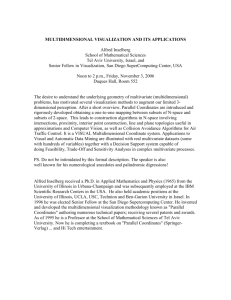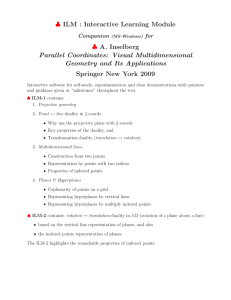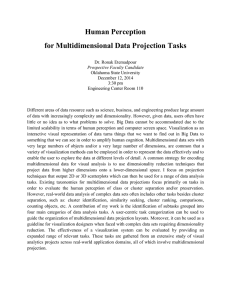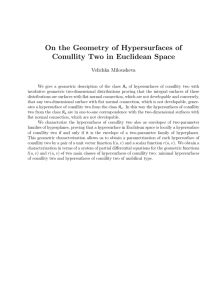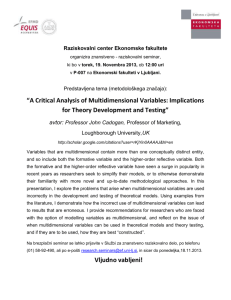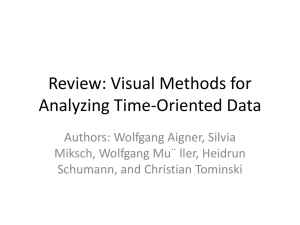Multidimensional Visualization & its Applications SINICA– Taipei
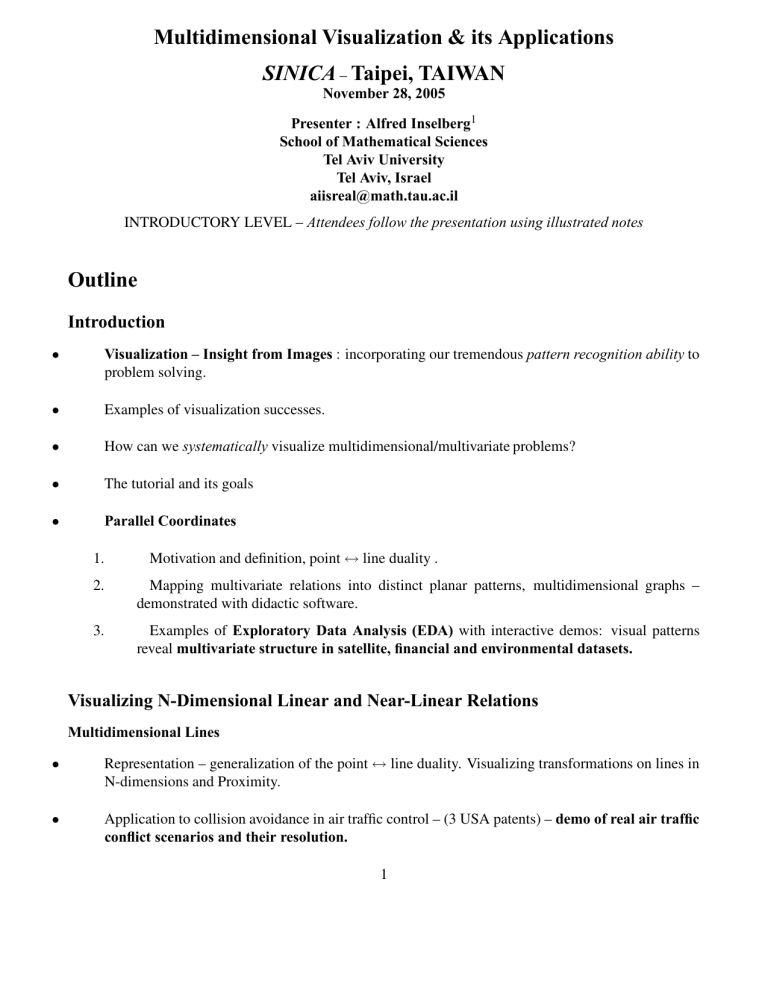
Multidimensional Visualization & its Applications
SINICA
–
Taipei, TAIWAN
November 28, 2005
Presenter : Alfred Inselberg
1
School of Mathematical Sciences
Tel Aviv University
Tel Aviv, Israel aiisreal@math.tau.ac.il
INTRODUCTORY LEVEL –
Attendees follow the presentation using illustrated notes
Outline
•
Introduction
Visualization – Insight from Images
: incorporating our tremendous pattern recognition ability to problem solving.
•
•
•
Examples of visualization successes.
How can we systematically visualize multidimensional/multivariate problems?
The tutorial and its goals
•
1.
2.
3.
Parallel Coordinates
Motivation and definition, point
↔ line duality .
Mapping multivariate relations into distinct planar patterns, multidimensional graphs – demonstrated with didactic software.
Examples of
Exploratory Data Analysis (EDA) with interactive demos: visual patterns reveal multivariate structure in satellite, financial and environmental datasets.
Visualizing N-Dimensional Linear and Near-Linear Relations
•
Multidimensional Lines
Representation – generalization of the point
N-dimensions and Proximity.
↔ line duality. Visualizing transformations on lines in
•
Application to collision avoidance in air traffic control – (3 USA patents) – demo of real air traffic conflict scenarios and their resolution.
1
•
Planes, Hyperplanes & Flats
Detection of coplanarity.
•
Demo of Duality: Translation of planar points dimensions.
↔
Rotation of a plane about a line – for N-
•
•
Representing flats of dimension 2 to
N
−
1 and reading their equations from the graphs.
Proximity, approximate coplanarity, families of “close” flats.
•
Data Mining
More Visual Data Mining (EDA) (USA Patent) – navigating the discovery process from visual cues without prior hypothesis or biases. Examples :
•
•
1.
2.
3.
1.
2.
VLSI production data with 16 parameters, finding necessary conditions for high yield and quality, seeing how biases & “beliefs” defeat the goals and more. A dataset with 400 variables.
“Opening the black box’s cover”:
Visualizing the function of a artificial neural network
(ANN) doing transaction approval for credit purchases and finding it seriously defective. Towards the visualization of the learning process and function of ANNs
Automatic Classification – a geometric classification algorithm (compared to 22 other well-known classifiers) finds the classification rule
:
4.
5.
explicitly – in terms of conditions on the parameters, displaying and visualizing the rule as a hypersurface, finding the minimal subset of parameters sufficing to state the rule (this is not an approximation), ordering the parameters to optimize separation between a class (selected subset of the data) and its complement, estimating the rule’s precision.
1.
2.
3.
Examples of classification
Neural-pulse dataset with 32 parameters. Finding rule distinguishing two classes of neurons as shown in Fig. 1.
Finding the rule distinguishing different vehicles types from afar by their noise signature.
Discovering Water Mines from their Sonar Signature – some interesting outliers.
•
Curves & Hypersurfaces
Curves and their Images
•
Duality : Cusp their relatives.
↔
Inflection Point, Bitangent
↔
Crossing-Point, Conics
↔
Conics, Convex sets and
2
Figure 1: The neural dataset with the 32 parameters displayed in the background. On the left are plotted the first two parameters in the original order, on the right the first two variables (out of the 9) as found by the rule and the intricate separation achieved.
•
Hypersurfaces in N-Dimensions
Representing smooth hypersurfaces, developable, ruled, quadrics, others and visually detecting their properties.
•
•
Interior point construction and display algorithms – feasible states. Applications to process control and decision support.
Demo constructing visual non-linear models as hypersurfaces (
Response Surfaces
) for Decision
Support, discovering sensitivities, interrelationships, feasibility, criticalities, effect of constraints and doing trade-off analyses interactively.
End of Session
– Total time 3 hours with two 15 minute breaks
WEBSITE — www.math.tau.ac.il/ aiisreal
3
